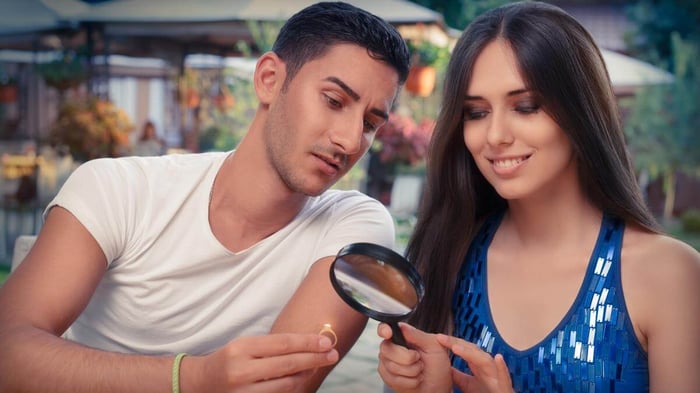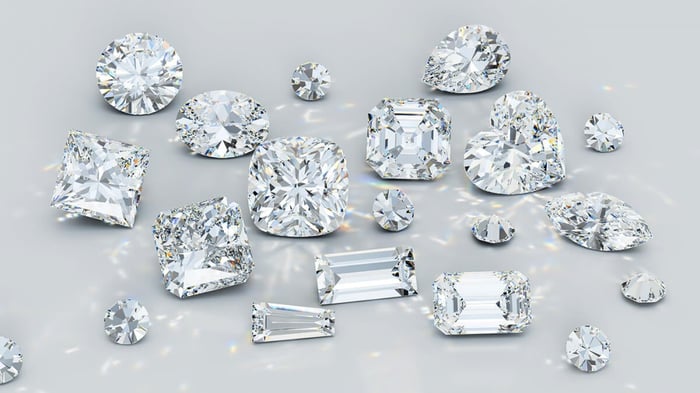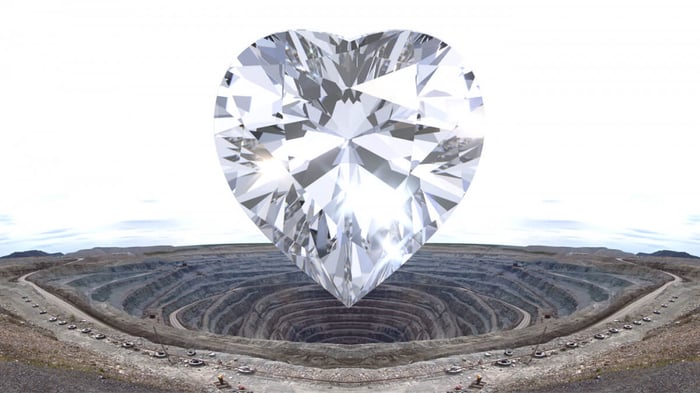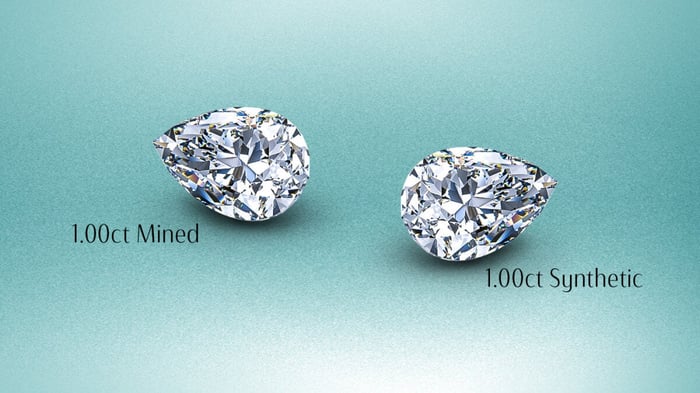How To Protect Yourself Against A New Lab-Grown Diamond Scam - Another Reason To Buy Certified Diamond Jewellery
Most of us have heard about fake diamonds, sometimes called simulants because they simulate the appearance of genuine diamonds. This article is about a relatively new lab-grown diamond scam.
Simulants, when passed off as natural diamonds, are fake diamonds. It is perfectly OK to buy cubic zirconia, moissanite, paste or other substances that look somewhat like diamonds as long as the seller does not try to pass them off as natural diamonds at a much higher price.
Many consumers wanting to buy diamond jewellery may be walking into a new trap, and this one is much harder to sort out!
There are two types of ‘real’ diamond, rare natural diamonds, formed over millions of years, deep underground and mined under challenging conditions before being cut and polished into the beautiful gems we have loved for centuries.
The second type of real diamonds is called ‘lab-grown' because they are created in modern laboratories worldwide with no rarity value because they can be mass-produced. These lab-grown or synthetic diamonds have been flowing onto the market over the past couple of decades in increasing quantities.
Just as with the simulants, there is no problem with these in ethical or legal terms, as long as they are not sold as natural or mined diamonds.
Lab-grown diamonds have some disadvantages, so we do not sell jewellery made with these gemstones. Unlike natural diamonds, lab-grown gems have little to no market value once sold, whereas natural diamonds have tended to increase in value over time. In addition, there’s the way we hold diamonds in our heads. Emotionally, most buyers of natural diamonds do so in large part because they are beautiful, but there is more. We understand their rarity, and we feel an emotional connection that we are wearing a piece of history, a rare item that has a life going back millions of years and can have a life in the future for more millions of years.
A lab-grown diamond is the product of a factory; there’s no emotional attachment, no heritage. For many people, the only reason to buy a lab-grown diamond is that they are cheaper than natural diamonds.
And that’s a problem!
€872,95
La joyería de diseño Hamsa ha sido considerada como portadora de buena fortuna, salud y felicidad durante milenios. Este impresionante colgante de hamsa "mal de ojo" con zafiro azul diamante no es una excepción. El colgante presenta un relajante zafiro… read moreCollar con colgante de Hamsa 'Evil Eye' de 0,33 quilates con zafiro azul y diamantes de 18 quilates

Lab-Grown Diamonds Are Being Sold As Natural Diamonds
It’s a fact, lab-grown diamonds are here to stay. They have their place in the market for bargain seekers, and they are certainly a big step up from costume jewellery. But what would happen if you were to give your fiancée a lab-grown diamond in an engagement ring without telling her? When she found out, she would be disappointed at the least. Her emotional attachment to the ring, the proposal and possibly the relationship would be shattered.
So, it’s a natural diamond for you in the engagement ring that you buy, right?
Sadly, unless you are careful, you might end up giving your fiancée a lab-grown diamond, having paid natural diamond prices. That is because an increasing number of lab-grown diamonds are being passed off as the real thing and, inevitably, being sold to retail jewellery buyers. A recent report published by a diamond industry insider has the details.
GIA Reports An Increasing Number Of Lab-Grown Fraud diamonds
The GIA (Gemological Institute of America), the largest and most reputable diamond grading organisation globally, has reported a significant increase in attempts to pass off lab-grown diamonds as natural diamonds. These are diamonds that have been submitted to the GIA testing labs to obtain a certificate of authenticity from GIA along with a diamond grading report that, in essence, turns the factory-made gemstone into the real thing.
Of course, the diamond does not change. Still, suppose a lab-grown diamond is given a certificate saying that it is natural. In that case, as far as most people are concerned, the diamond is now a genuine natural diamond and will have increased in value by a considerable amount.
Aretes colgantes con frotamiento de diamantes 5,00 ct Calidad G/SI Oro blanco de 18 k
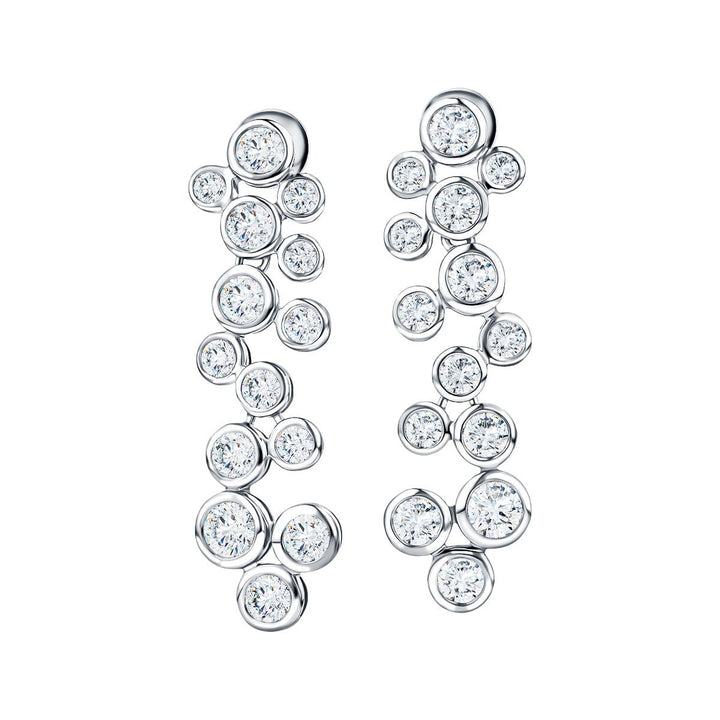
€11.041,95
Estos aretes son exquisitos, con un diseño premium agradable a la piel. Estos lujosos aretes colgantes de diamantes están elaborados en oro blanco prístino de 18k y cuentan con hilos de diamantes de calidad G/SI de talla redonda en una… read more
As a buyer of diamond jewellery, the first that you might find out if you have been scammed in this way is when an honest, expert jeweller realises what has happened – and that is way too late to do you any good.
On the 17th May 2021, the GIA reported lab-grown diamonds being passed off as natural diamonds in the diamond industry press.
Of course, attempts to pass off low-value goods as higher values goods is nothing new, not even in the diamond industry. That’s why having a diamond grading certificate from an organisation like the GIA is so essential. By the way, we ONLY work with the GIA for our diamond grading certificates!
The good news is that the GIA is picking up on these fraud attempts; their systems and techniques can detect lab-grown diamonds or diamonds that have been manipulated or enhanced. The bad news is that the fakers have come up with a new twist. It is a twist that makes it even more important to insist on a GIA diamond grading certificate for your diamond jewellery.
A New Twist On An Old Trick
Today, many diamond producers use lasers and electron beams to inscribe unique invisible markings onto their diamonds. These can be read using specialised equipment. Fraudsters are now adding faked markings to lab-grown diamonds to make it even harder to detect these fraudulent gemstones easily.
In addition, the diamonds are being cut and polished to give them a shape and size that is almost identical to existing natural diamonds with genuine certificates. This could become an issue for buyers of second-hand diamonds, especially if the grading certificate is written up by the retailer or is one of the less highly regarded certifications with looser standards than the GIA.
When a diamond is presented to a buyer with a genuine certificate and where the fake diamond’s measurements are almost identical to those on the certificate, it will be tough for the buyer to know what is happening.
Even if you are a fan of lab-grown diamonds, this is a bad thing because it casts a shadow over the whole lab-grown industry; after all, the lab-grown diamonds had to come from somewhere, right? And anyone taken in by these schemes has been robbed of a lot of money.
How To Make Sure That You Get The Right Diamond?
Firstly, be very wary of buying any diamond jewellery that has no diamond grading certificate. If possible, insist on a GIA certification rather than any other type.
Secondly, the GIA can detect any diamond passing through its process as natural when it is a lab-grown gem. So, if you buy a new piece of jewellery with a new diamond certificate, you can count yourself safe.
If anybody passes diamonds to the GIA that turn out to be lab-grown rather than natural, the supplier is given one chance. After all, the supplier may have been misled. But there are no second chances. If a supplier tries a second time to pass off lab-grown diamonds as natural, his account will be closed, the GIA will no longer offer its services to the person or business, and law enforcement are notified.
As an individual, you can do checks, but they are not guaranteed, but if you are suspicious, this method might be enough to confirm your suspicions and enable you to step away from a potentially bad deal. According to Tom Moses, the GIA chief laboratory and research officer, some, but not all, lab-grown diamonds can have blueish, greyish or slightly brown tinges. That is due to treatments applied to lab-grown diamonds to enhance their appearance.
How Does All Diamond Keep Diamond Jewellery Buyers Safe?
Fakery and fraud are nothing new in the diamond jewellery business, but we have some simple guidelines to ensure that you get what you paid for. Other good jewellers will, of course, do the same things.
1) We maintain relationships with trusted suppliers. We have been in the diamond business for many years. We protect our personal and business reputation by taking care about the people and companies with which we deal.
Anillo de eternidad completa de tres filas con 66 piedras, diamantes de 6,00 ct, oro blanco de 18 k
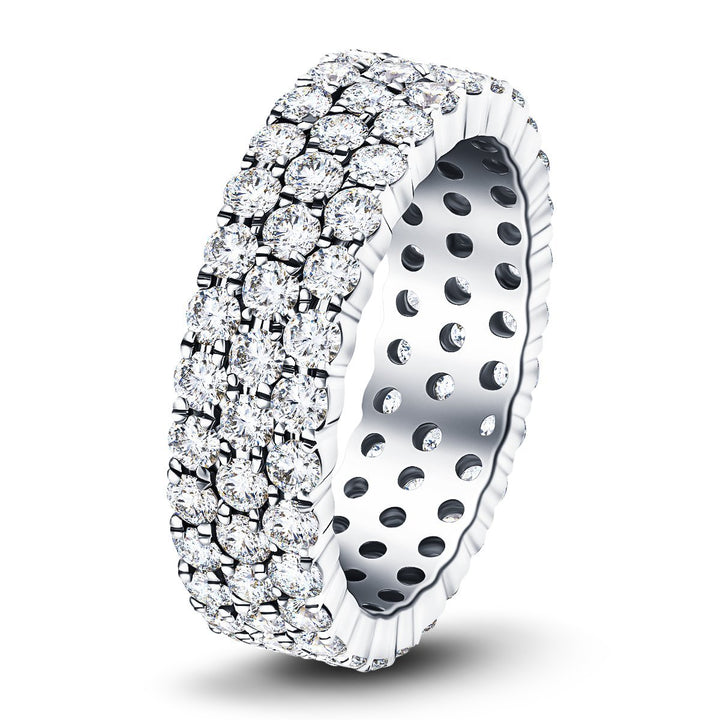
€9.900,95
El atractivo brillo de 6,00 quilates de diamantes de calidad G/SI de talla redonda se muestra en tres filas en una brillante banda de oro blanco de 18 quilates de 8,00 mm de ancho y sello del Reino Unido. Este… read more
2) Almost all our diamond jewellery is supplied with a diamond grading certificate from the GIA. Only the smallest of diamonds do not have individual certificates, but these diamonds are not the target of lab-grown fraudsters. As noted above, the GIA are the most trustworthy and strictest diamond grading organisation anywhere!
3) We are vigilant; our jewellers are careful and look out for anything suspicious. When you buy from All Diamond, you are getting precisely what you paid for – guaranteed. We will never be a part of any lab-grown diamond scam!
Because you want to own beautiful diamond jewellery, either for yourself or as a gift for a loved one, you owe it to yourself to make sure that you get what you expected, no surprises. We agree; that’s what we believe too!
